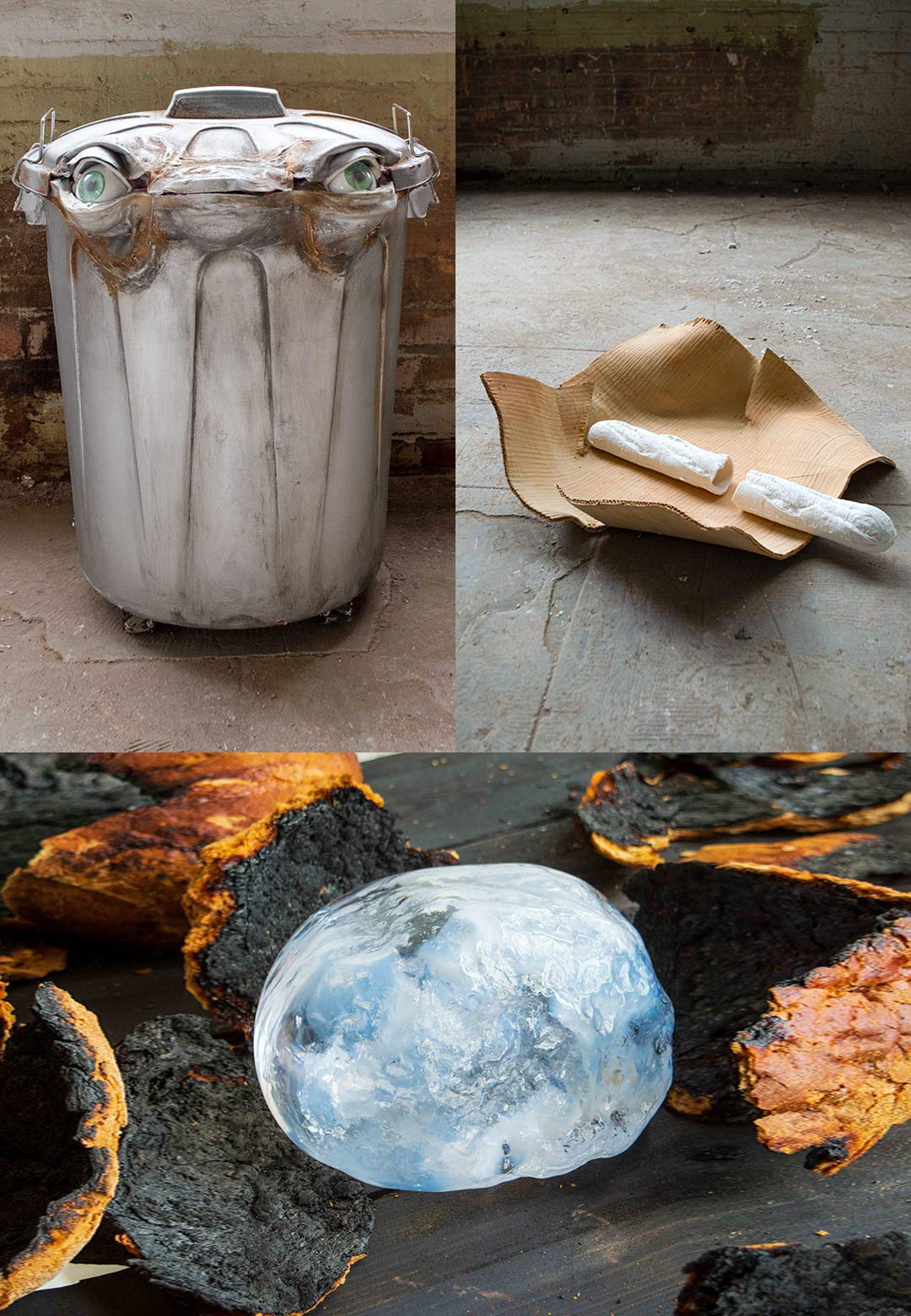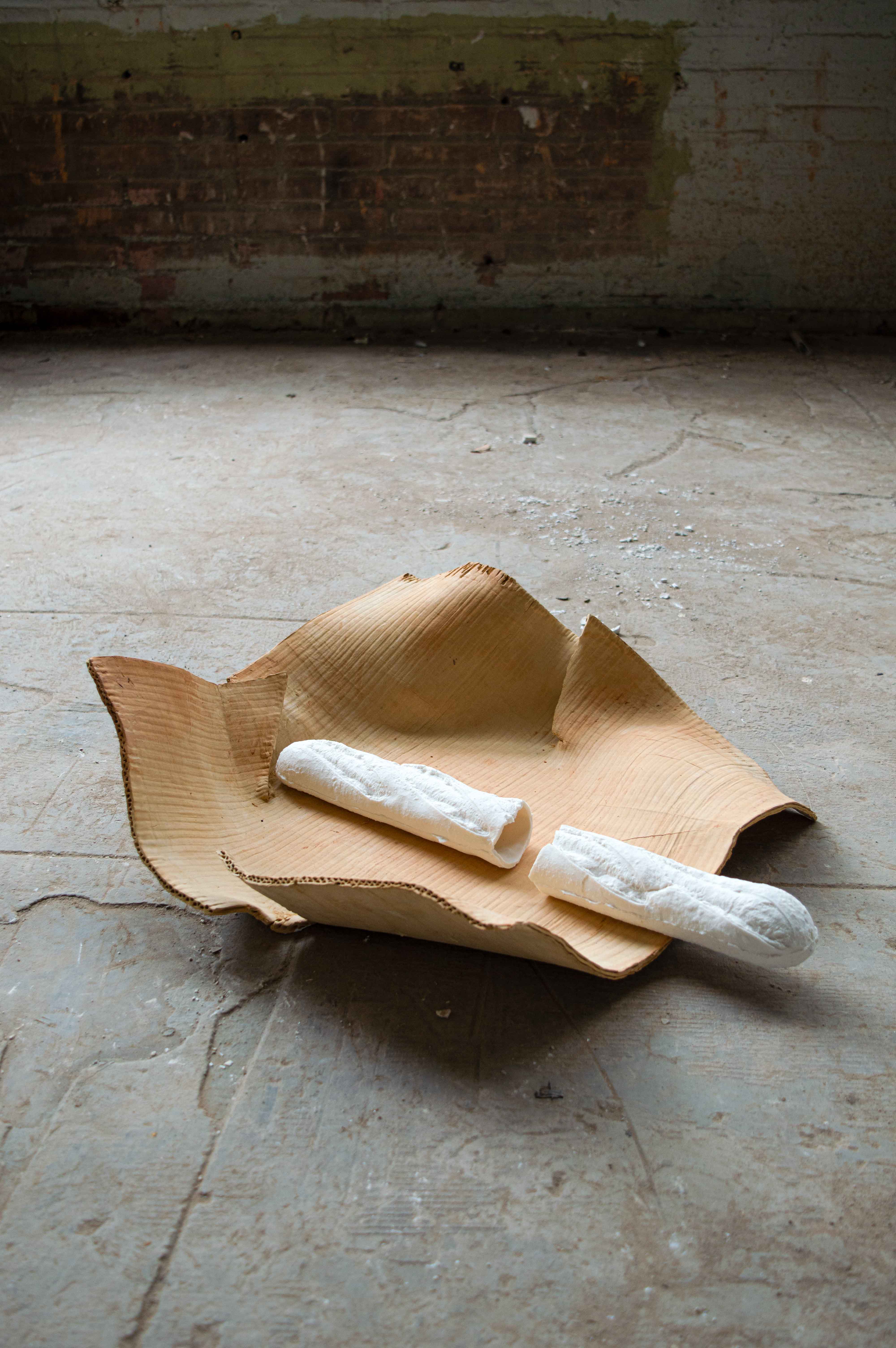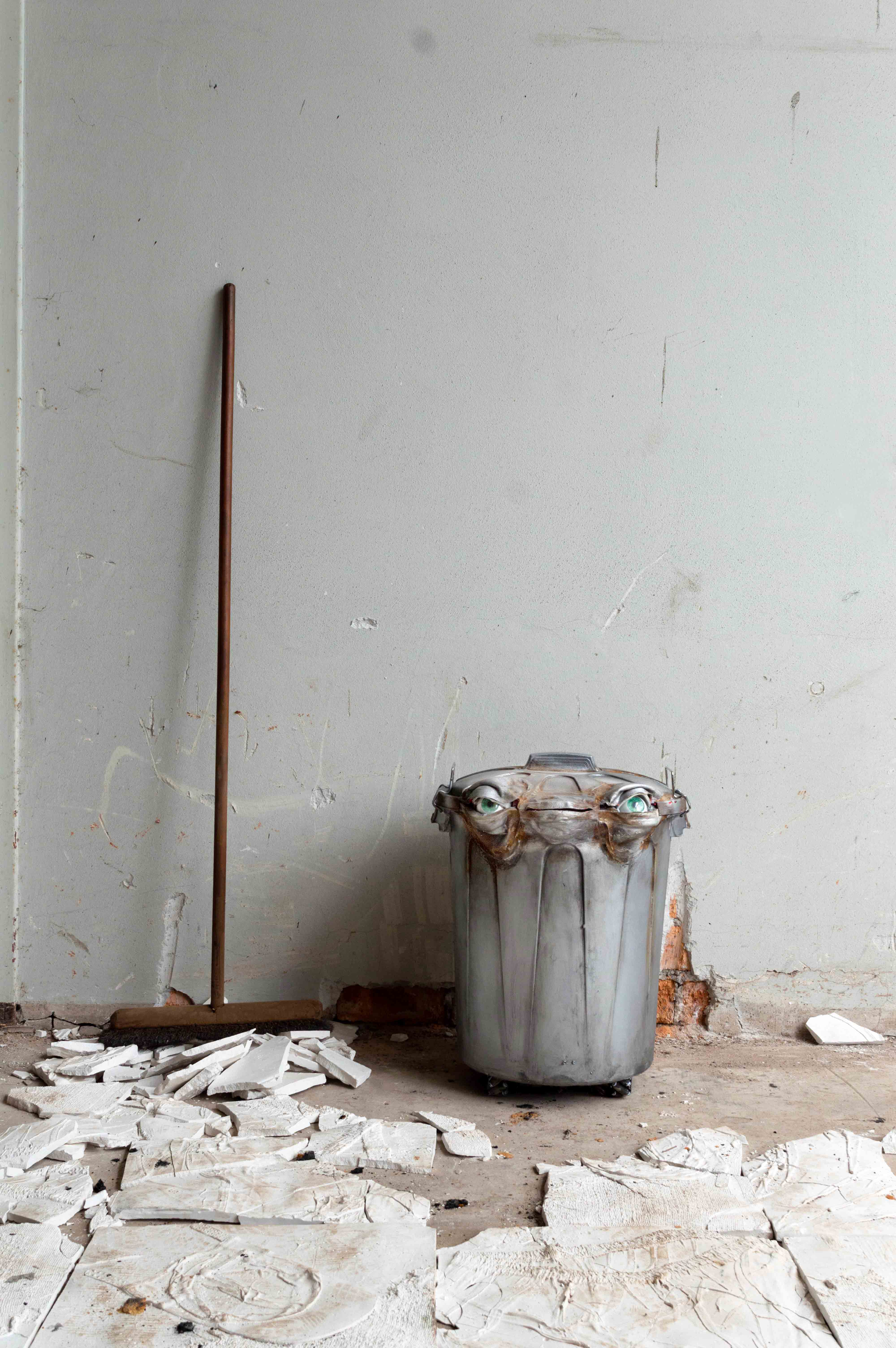Bruno Baietto’s installation, ‘Follow the crumbs that fall from your own’ recently showcased at the Dutch Design Week, as part of the Design Academy Eindhoven graduation show comprised a set of installations that were created by blowing glass inside a hollowed loaf of bread.
Created by Baietto as part of the Contextual Design programme that he was pursuing at the Design Academy Eindhoven, these glass pieces, sculpted with the help of bread loaves, served as a commemoration to the history of labour, class differences and religious disparity in a broader sense and the characteristic exploration of Baietto’s family history. The installation also featured a brittle floor, inviting visitors to step on it, leaving a trace of destruction on it.
Bruno Baietto is an artist and designer, born and brought up in Uruguay. Currently based in the Netherlands, he distinctly examines the influence that Western culture and other widely accepted ideological structures and cultures have on the way we design our spaces, objects and products. “I am a designer born and raised in the clash between the Brazilian hedonist optimism and Uruguayan nihilistic nostalgia of things were better how they used to be, in a working-class family turned middle-class, with a communist-raised mother and a capitalist father. Suffice to say, that the subject of ideology was always the battleground of my upbringing and continues to be so,” says Baietto about the influences that guide his work process.
His research and analysis, combined with a compassionate consciousness and fuelled by Baietto’s artistic inclinations, give form to sculptures and installations that are visually intriguing as well as heavily symbolic.
The glass blown pieces called ‘A Bread Is A Bread is a Bread’ resemble vases and vessels that sometimes appear like bespoke utilitarian pieces and at other times, like disformed and discarded parts of a larger glass structure, thus allegorizing the perceptions that are borne out of living in inconsistent and conflicting societies, one of which the artist himself has been a part of.
The glass blown inside the bread took on the shape of the bread that sculpted its form, making each piece differently imperfect. This appearance of the glass objects thus serves as a manifestation of the idea that external ideological structures shape designs, and when the same ideologies are debunked, they leave behind remnants that end up in a state of contradiction, thanks to the pre-existing conflict between the widely accepted normative structures in society and personal ideological constructions that are informed by the designed environment, yet stay faithful to vernacular ideas and ideologies.
The overall installation by Baietto comprised several other pieces, namely ‘Justin the Dustin’, Porcelain Vases, Ceramic Cardboard Trays, Porcelain Safety Shoe and Porcelain Bread.
Created at the National Glasmuseum in Leerdam by Baietto, the process involved the insertion of molten glass inside a hollowed-out loaf. The bread loaf was then blown at a high temperature. While the bread eventually broke off and fell, unique glass vessels emerged in the process.
‘Justin the Dustbin’, a peculiar looking dustbin with two googly eyes masqueraded around the showcase like a lively spectator who observed the activities around the installation and presented a commentary on the same. This particular feature of the installation was presented either as an interactive live performance or as a pre-recorded voiceover. ‘Justin the Dustbin’, voiced by Nick Monro, mainly presented a pertinent critique of the ideological contradictions that outline the interactive installation.






 Sign in with email
Sign in with email
















What do you think?